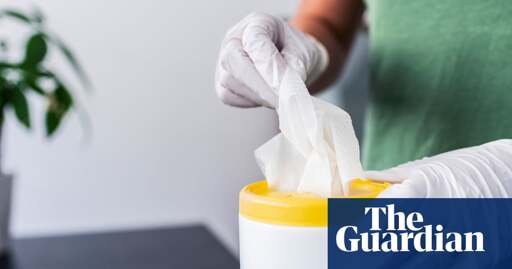Starch-based bioplastic that is said to be biodegradable and sustainable is potentially as toxic as petroleum-based plastic, and can cause similar health problems, new peer-reviewed research finds.
Bioplastics have been heralded as the future of plastic because it breaks down quicker than petroleum-based plastic, and is often made from plant-based material such as corn starch, rice starch or sugar.
The material is often used in fast fashion clothing, wet wipes, straws, cutlery and a range of other products. The new research found damage to organs, changes to the metabolism, gut microbe imbalances that can lead to cardiovascular disease, and changes to glucose levels, among other health issues.
The authors say their study is the first to confirm “adverse effects of long-term exposure” in mice.



AFAIK the claim was never that bioplastic are “healthy”, the claim is that it breaks down way faster. Preventing a buildup as we have seen with mikroplastic.
Sensationalist headline IMO.
It doesn’t breakdown as fast as claimed, either. PLA needs high temperature composting to breakdown.
It’s not impossible to do, but nobody bothers. It’s one of the more sustainable options for 3d printing, so we should get on that.
I actually see it as weirdly counterproductive. When bioplastics degrade they release their carbon into the air as carbon dioxide. Whereas a properly landfilled piece of plastic takes its carbon permanently out of circulation, it’s literally sequestered.
Landfills get a bad rap. When they’re done right they’re a clean and reliable way to deal with waste. They’re just easy to get wrong if you don’t care, and they look so unphotogenic it’s easy to campaign against them. But one of my favourite parks is a former landfill done right, aside from the occasional monitoring well scattered around the place there’s no way to tell what it used to be.
It’s only releasing CO2 that was already there. We’re not digging the carbon out of the ground after it was sequestered millions of years ago. PLA is currently mostly from corn, though there are other crops that can work. There’s even a hemp-based path, though I don’t know how viable it is.
PLA is one of the most recyclable plastics. Grind it up and you can melt it back into 3d printer filament. The machines for this have been improving a lot. The bad news is that you have to make sure you only put PLA stuff into the grinder. This makes it hard to do at makerspaces where you can’t trust people to separate PLA prints from others. I am hoping that my own makerspace gets a machine, and then you can at least handle your own prints that way.
CO2 is CO2, it doesn’t matter where the carbon came from. If you’re sequestering plastics that were made from plants then you’re taking it out of the atmosphere for a net benefit.
It was never intended as a carbon sequestration method, and it would make a very poor one. Considering the energy input in creating it, as well, it’s likely CO2 positive over its lifespan. We would be better off not making it at all if that’s the main consideration.
“Never intended” doesn’t mean it doesn’t work as one.
The point I’m making here is that if we already have a chunk of plastic, why not bury it? Your own comment that I originally responded to was about how the composting process for these bioplastics is difficult to do and so people rarely do it. Landfills are comparatively quite easy and common, we already have that process well established. So if you’ve got a chunk of carbon-rich plastic right there in your hand and you’re trying to decide what to do with it, which makes more sense, turning it into CO2 to vent into the atmosphere, or sequestering it effectively forever? There are carbon sequestration projects that go to much greater lengths to bury carbon underground than this.
Landfills don’t necessarily sequester the CO2 for long. Often, they release the carbon as methane. Methane is a much worse greenhouse gas than CO2, and so landfills often pipe the methane to be burned. The amount of CO2 released for every unit of methane is a smaller greenhouse concern than the original methane, but none of this should be considered sequestration.
If the plastic is not degrading then it’s not releasing anything, be it methane or CO2.
Isn’t one of the big talking points against plastic the “it’ll be around for thousands of years” thing?
Don’t the still break down to microplastics since they are so resistant to being broken down?
IDK how fast they break down, they are supposed to break down faster. But apparently not as fast as to makers claim.
That’s always been a garbage claim, “in an industrial composter” where heat and moisture are super high. At very least moisture and UV light are needed, probably not going to happen in a landfill. But then nothing else in there is gonna decay either. If you dig up landfills from the 70s and 80s, you can still read the newspaper articles layered in with everything else. Imagine the wrappers for candy you threw away as a kid. They still exist.
The catch is those landfills do get quite warm under the pile so if they didn’t need UV light it might work.
The reason why paper keeps so well is it needs oxygen to break down and it has a butt load of methane covering it under the pile